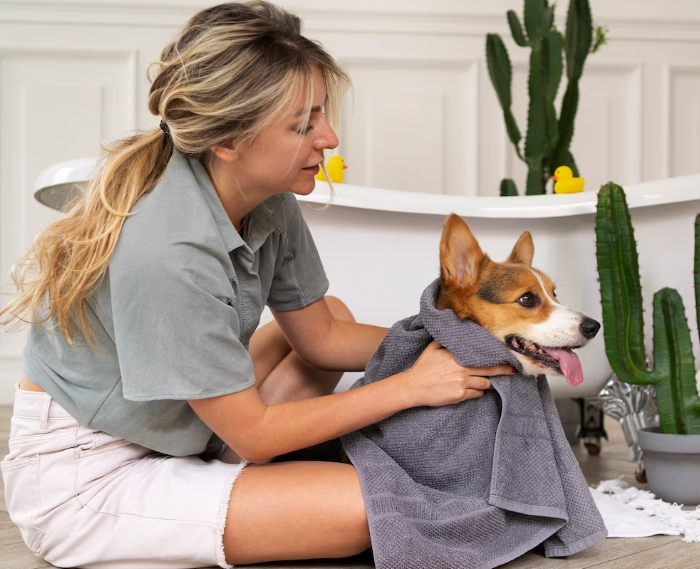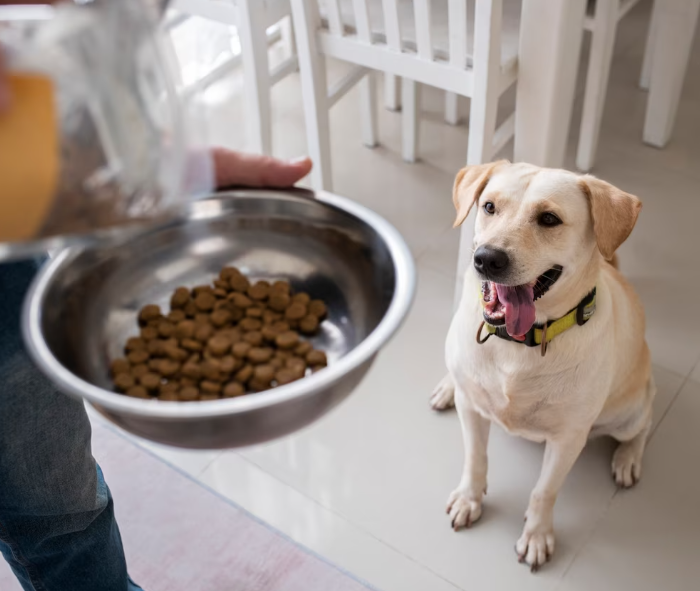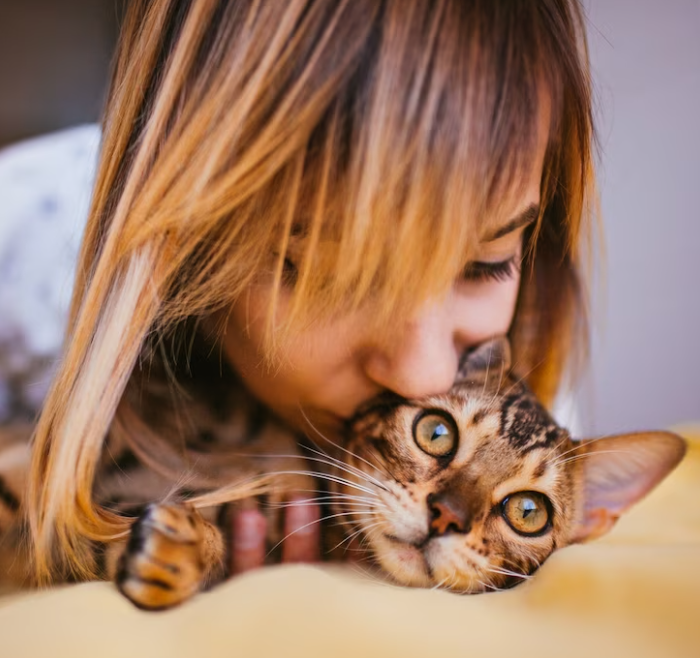2024-01-15
We, animal lovers, are eager to welcome a paw friend into our homes and become their forever family! We genuinely enjoy the company that our dogs and cats provide us with and all the great moments full of joy we have together.
What we tend to disregard as an essential factor in cat and dog raising is the responsibility we bear for them. Presumably, we all know how to be responsible owners, in reality, things are often a bit different. Why is that?
Sometimes, we make rash decisions without fully understanding what truly means to become a dog/cat parent, other times, we seem to be unable to evaluate the importance of all the factors that accompany the process of raising a pet friend.
Since you have ended up here, you may want to be the best possible pet parent for your canine or feline friend. We will give you several tips that may help you become (even more) responsible in terms of cat/dog raising.

Some of you may answer immediately: “Yes, of course”, while others may start to think of all the aspects of having a pet.
You should be certain that you will be ready to take your dog for regular walks, regardless of how small, large, and energetic they are. All canines need to go outside for walks.
This means that you may need to go out for walks early in the morning or late in the evening, depending on your working schedule. Things can become even harder if there is no family member or a close friend, who can help you with the care of your dog.
Whether you have a dog or a cat, you will need to spend money on food, supplies, and regular veterinarian checks. You should make sure that you are financially able to take proper care of your paw friend.
Does a pet match your lifestyle? This is a question you should give an honest answer. If you work a lot, travel a lot, or are actively socially engaged, and you are not ready to make a place for a new responsibility, then you’d better not do it at all.
Last, but not least, you should discuss with your family members, partners, and/or any roommates, whether they agree to welcome a pet into their home or not. Even if you are the owner of the dog/cat, the other members of the household will also have interactions with the pet and should agree to have one at home. Not to mention, that allergies to dog/cat fur are issues that should not be taken lightly.
A very important factor, that should not be neglected is making your home a safe and comfortable place for your canine or cat.
“A safe place” is a term with a wide range. In the context of raising a pet, it may encompass the following aspects:
Removing any sharp and/or small items that can be easily digested by your cat or dog or that can otherwise hurt them;
Setting up a safe area for them, which may include putting a baby gate, a pet pen, and/or bedding where your cat or dog will be able to relax and play undisturbed;
Removing / Preventing your pet from having access to any potentially dangerous food for them. Securely lock sweets, especially chocolate with a high content of cacao, and products that contain xylitol; raisins; citrus fruits; onions; garlic; fruit with nuts and dairy products (dogs and cats are lactose intolerant due to lack of sufficient amount of the enzyme that turns lactose into milk);
Ensuring that your pet’s personal space is in a proper area at home- it should not be too cold too hot or draughty, and it should have a good view to other areas of the house/apartment, without being too crowded or too isolated;
Maintaining the area, so it is always clean, and dry.
Making sure that your pet is fed and has access to fresh water.
The list of factors to be considered to create a safe and comfortable environment for your dog/cat can always be extended, based on the particular situation and living situation.

If you want your dog or cat to grow up healthy and happy, you should adjust their diet to their age, breed, and lifestyle. Do not opt for cheap food of questionable quality, but keep your beloved paw friend on a healthy and balanced diet.
Mix wet and dry food, cook for your cat/dog, when you have time, incorporate fresh fruits and vegetables into their diet (safe for pets), and consult with a veterinarian on what diet will be the best fit for them.
It does not matter, if your paw friend, especially if it is a dog, is lazy or energetic. Exercising based on their needs, age, energy level, and health is always necessary to keep them fit and healthy.
If your dog is of a highly energetic and intelligent breed, regular physical and mental stimulation is mandatory. Otherwise, you should prepare to deal with behavioral issues and bad habits out of boredom and a lack of activity options.
Annual checkups and vaccinations are needed to ensure that your cat/dog is safe and protected from various dangerous viruses.
Common vaccines for dogs are against:
Rabies, Canine Adenovirus (CAV), Canine Distemper Virus (CDV), Canine Parvovirus Type 2 (CPV-2).
Common vaccines for cats are against:
Feline Herpesvirus-1 (FHV-1), Feline Calicivirus (FCV), Feline Parvovirus (FPV).
Your pet’s veterinarian will consult you on what vaccinations and how often should be made. Also, depending on your pet’s lifestyle and living environment, they need to undergo parasite control on a regular basis.

The thought that your dog or cat may get lost is terrifying to all loving and responsible pet parents. If you want to ensure that your paw friend won’t end up in a shelter or otherwise be separated from you in case they may get lost is to put identification on them.
There are many types of identification that can be helpful in such cases, e.g. ID cards, ID tags, collars, and microchips.
If your dog is energetic and enjoys spending much time outdoors exploring the surroundings, microchipping may be a good option. The same is also valid for anxious and shy canines who get easily scared by different stimuli in the environment.
If you have a feline friend who does not spend the entire time at home, and you are afraid they may indulge in their praying or inquisitive nature, then microchipping them may calm your mind.
Whether to neuter/spray their pet or not is an owner’s decision. However, if you are not ready to take responsibility for your pet’s litter and/or may find yourself unable to find reliable people to take care of the pups/kitties, then neutering/spaying your canine or cat might be the best option for you.
It has been proved that this intervention significantly reduces the risk of developing serious health conditions, such as mammary cancer in female cats and dogs, and testicular cancer in male cats and dogs.
An emergency can also happen so if you would like to prepare and protect your pet from injuries, illnesses, or different types of unexpected events, having pet insurance may be a good option. Pet healthcare plans, on the other hand, cover the bills for regular routines such as annual checkups, vaccinations, and microchipping.

Even if you love your paw friend unconditionally and consider yourself the most important person in their life, they will still meet other people and animals on a regular basis. This requires proper socialization to be conducted as soon as possible, starting with the members of your household, and expanding to your close friends, acquaintances, and all other people that your pet (in most cases a dog) will meet in their life.
Proper socialization will help you ensure that your paw friend can handle different types of situations and behave well in various circumstances. The first year of your pet’s life is essential in terms of developing their social skills.
If you have a dog, it is highly recommended that you meet them with well-mannered and socially skilled counterparts as well as different types of people in terms of their age, sex, race, and physical appearance.
Even if you do not want your dog or cat to become your emotional support animal or a service dog (valid for dogs only), training can still benefit them a lot.
Fulfilling basic obedience commands such as “sit”, “stay”, and “come” will put your mind at ease when around other people and animals. Training your paw friend will contribute to increasing your confidence in their social skills and also your skills to handle them.
It is a misconception that only dogs can be trained. Despite their independent nature, cats can also be taught to do basic obedience tasks and tricks.
Clicker training is a training method that has proved easy to apply and very effective. It is based on creating an association between a clicker and a reward. In other words, every time your dog or cat shows a wanted behavior, you should click and feed them a treat.
If they are not food-motivated, praising, petting, or playing with them, are also good options. Over time, the clicker (or the device you have been using to produce distinctive sounds) can be replaced with vocal commands.
This point applies to dogs in particular. As a responsible owner, you should always carry poop back when taking your dog for a walk and clean up after them.
The last and maybe most important point of all is to simply love your dog or cat! Love does not only manifest in feeding, grooming, and taking your pet to a veterinarian... To love your pet means to spend time with them, engage in different activities that will help you strengthen your bond, and unleash your potential as a team!